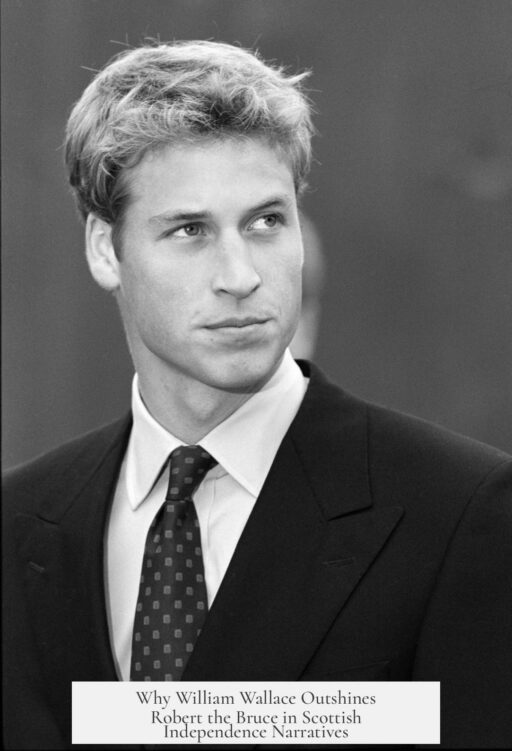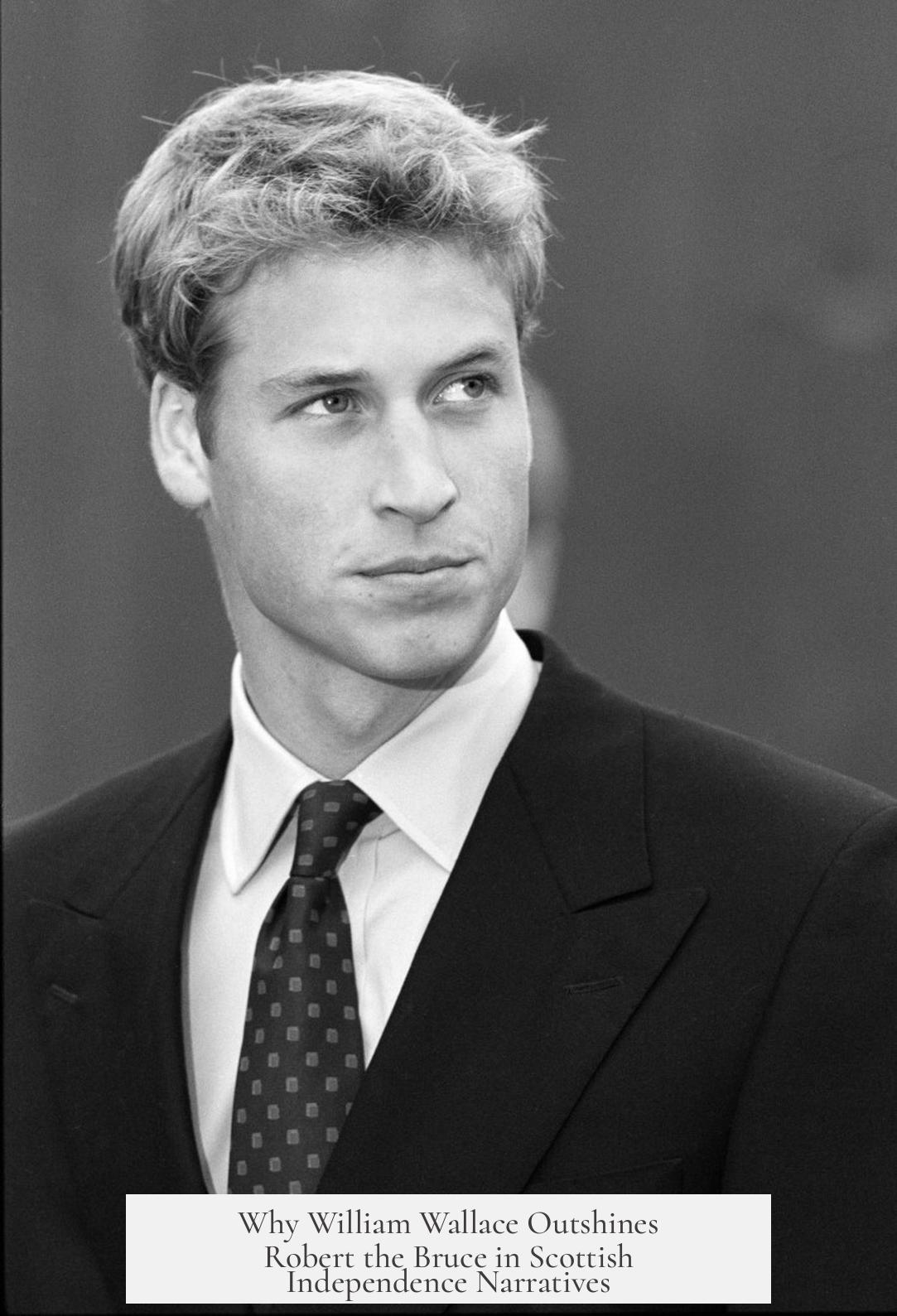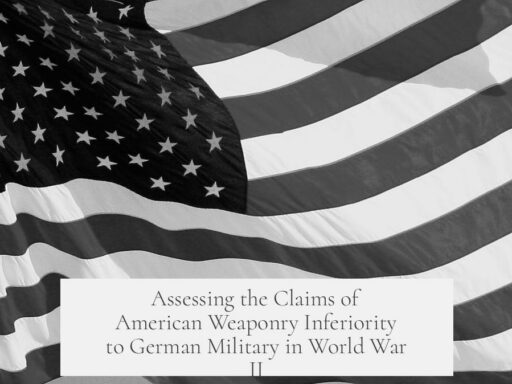William Wallace overshadows Robert the Bruce largely due to the contrasting nature of their stories and how cultural memory favors simple, heroic narratives over complex political realities. Wallace’s role as an early military leader in the Scottish Wars of Independence was brief but dramatic and easily framed as a tale of martyrdom. In contrast, Robert the Bruce’s campaign to secure Scotland’s independence involved intricate political maneuvering and a longer struggle that is harder to capture in popular mythology.
William Wallace emerges in historical records mainly around 1297. He comes from a knightly family and gains fame by leading a successful attack against the English at the Battle of Stirling Bridge. His victory elevates him to Guardian of Scotland, a title he holds for about a year before defeat at Falkirk forces his resignation. Wallace then fades from view for a period, possibly seeking support in France, before resuming resistance until his capture in 1305. His brutal execution made him a symbol of Scottish resistance.
Wallace’s story is straightforward and easily dramatized. He stands as a heroic figure fighting for Scotland’s freedom, dying as a martyr in English hands. This simple narrative appeals to cultural memory, which favors clear heroes with tragic ends. Importantly, Wallace fought not for Robert the Bruce but for the deposed King John Balliol and the broader cause of Scottish liberty. All Scottish lords who governed during this chaotic period nominally supported King John, not Robert the Bruce.
Robert the Bruce’s path is more complex. Initially, he appears loyal to the English crown, reflecting the tangled loyalties of many Scottish nobles. His family had ties to the English king, and early on, Bruce even opposed King John Balliol, seeing him as a rival. Only after a series of political setbacks—including the defeat of King John’s French allies and the submission of John Comyn, a powerful Scottish magnate—does Bruce decisively assert his claim to the Scottish throne.
Bruce’s rise involves a political coup: he kills Comyn at a Franciscan friary in 1306, then rapidly crowns himself King of Scotland. From this point, Bruce commits to a prolonged military campaign to secure independence, balancing alliance-building, warfare, and diplomacy until his efforts culminate in the decisive Battle of Bannockburn in 1314 and eventual recognition of Scottish independence in 1328.
The contrast between Wallace and Bruce’s stories helps explain their differing public profiles. Wallace’s narrative is short, fitting a classical hero’s journey with a tragic martyrdom. It lends itself to literary and popular adaptations, reinforcing his image as a symbol of Scottish patriotism and sacrifice.
Bruce’s story is not as easily romanticized. His slow, strategic approach includes moments of betrayal and political violence. Unlike Wallace, he does not embody pure martyrdom but realpolitik. This complexity challenges simple historical portrayals and requires nuanced understanding, which is less accessible for popular media and collective memory.
In summary, William Wallace overshadows Robert the Bruce because:
- Wallace’s story is concise, heroic, and tragic, fitting the archetype of a martyr.
- Cultural memory favors clear heroes with dramatic narratives over complex political figures.
- Bruce’s path to kingship and independence was long, complicated, and involved morally ambiguous actions.
- Wallace is popularly framed as the first significant military leader resisting English rule.
- Bruce, though ultimately the successful leader who secured independence, is less suited to simple heroic depictions.
Both men played essential roles in Scotland’s history, but the difference in how their stories resonate shapes why Wallace remains more prominent in popular culture.
Why Does William Wallace Get All the Press When Robert the Bruce Won Scottish Independence?
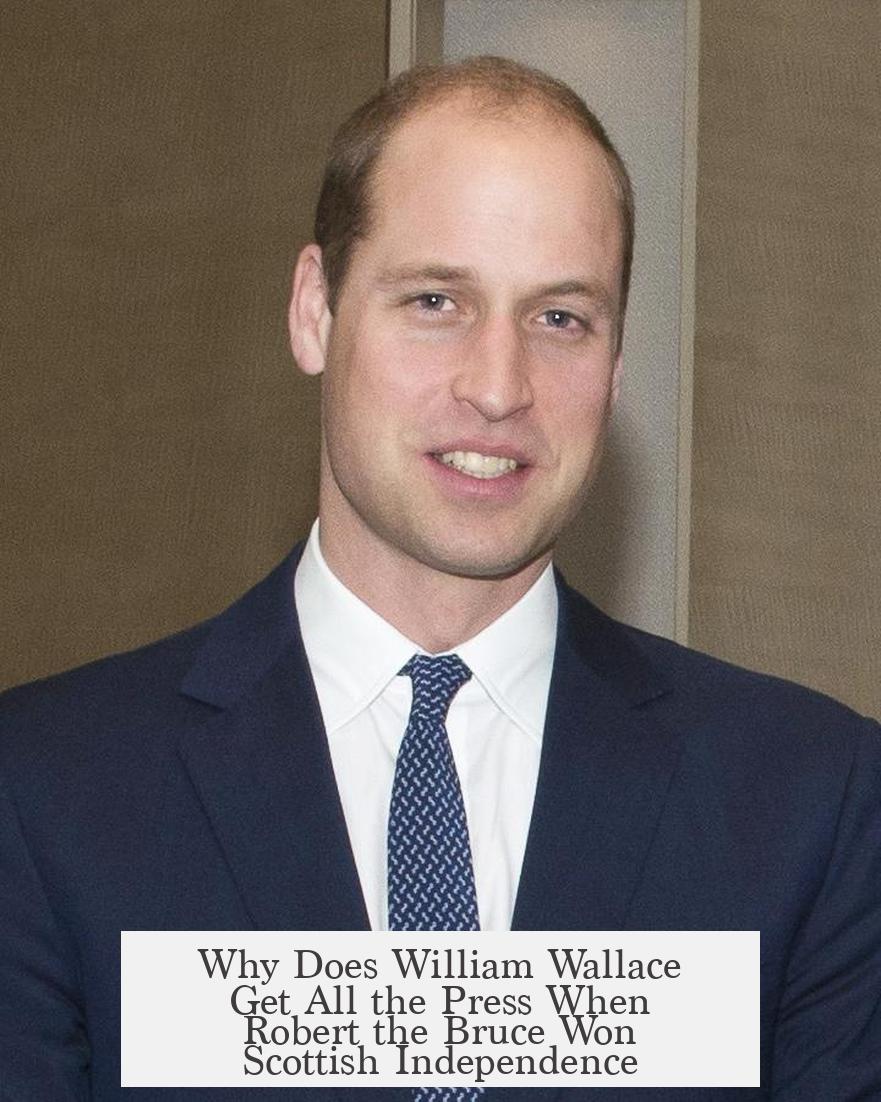
William Wallace seems to overshadow Robert the Bruce in popular imagination, but there’s a clear reason for this: Wallace’s story is simpler, more heroic, and more immediately tragic, while Robert the Bruce’s path to freedom is complicated and less glamorous. Let’s unpack why this is the case and explore the fascinating dynamics behind their reputations.
When you think of Scottish independence, your mind likely bolts to Wallace—the tough knight with a fearsome reputation who rallied the Scots against English rule. But Robert the Bruce? He’s the complex king who actually secured Scotland’s liberation. So, why does the former hog the spotlight?
The Simplicity of a Heroic Martyr: William Wallace’s Quick Rise, Fall, and Legend
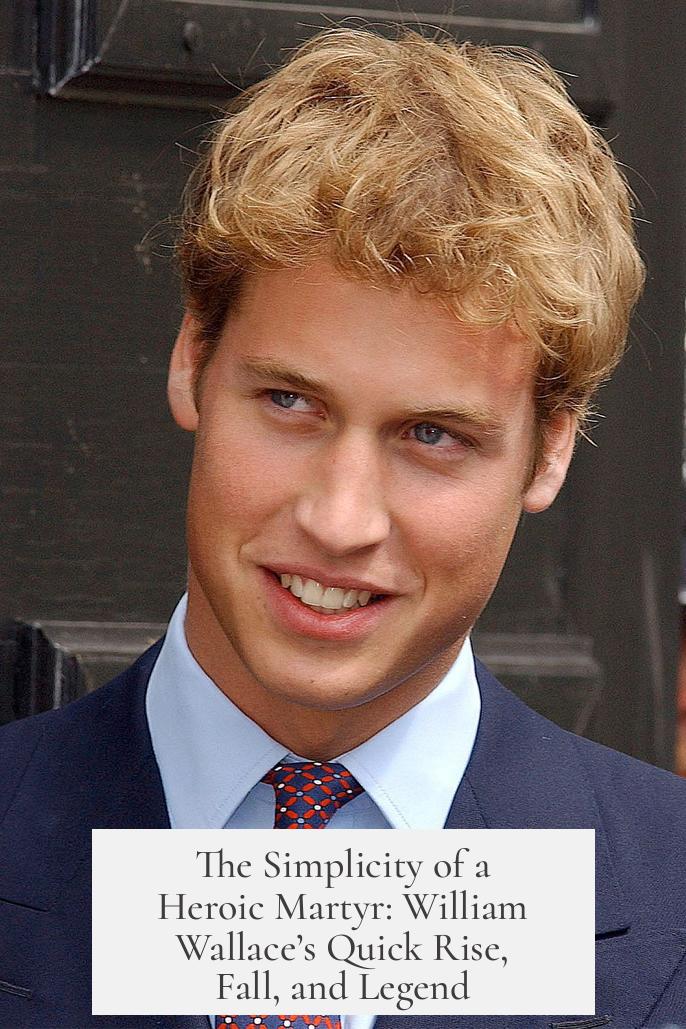
The cultural memory of history often favors stories that are easy to grasp and emotionally compelling. William Wallace fits this mold perfectly. We know he comes from a knightly family and took part in early battles against the English, notably leading the Scots at the Battle of Stirling Bridge in 1297. His victory was significant and earned him the title Guardian of Scotland—but only for about a year.
After a defeat at Falkirk, Wallace fades from the main scene for a few years, reappearing briefly in 1304 before his capture and brutal execution. His narrative is a compact, roller-coaster tale: a noble but somewhat obscure knight who rose swiftly, fought valiantly, and died tragically in enemy hands.
That’s history served with a heavy dose of drama—which popular culture loves. His martyrdom-style story is easy to tell and emotionally stirring. It is the classic “underdog hero against the tyrant” theme, appealing and memorable.
“Wallace was not fighting for Robert the Bruce, but rather for the deposed King John, a fact surprisingly forgotten in many depictions.”
Furthermore, Wallace’s loyalty lay with King John Balliol, the “deposed King John.” This means Wallace wasn’t the direct champion of Bruce’s cause but was aligned with a rival faction. Such nuances tend to get blurry in popular retellings, allowing Wallace’s simple “freedom fighter” image to shine.
Robert the Bruce: A Politician, King, and Master of Chess—not Just Battles
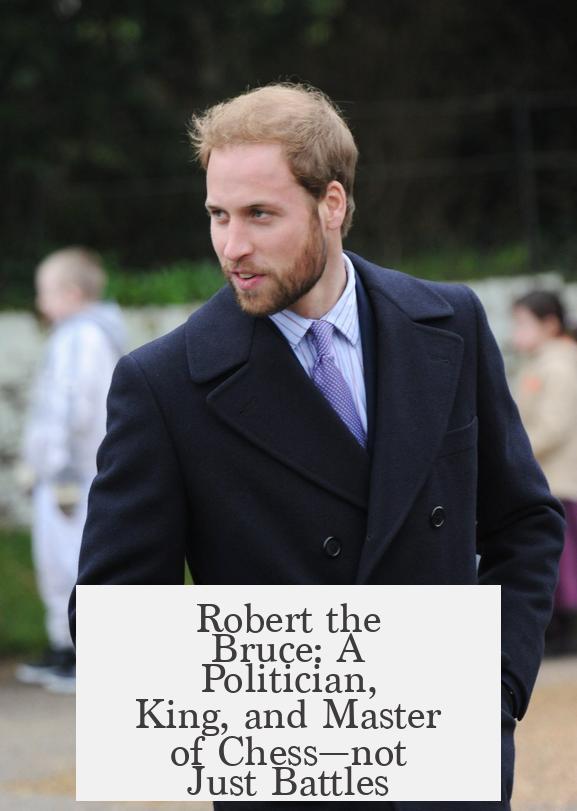
Now, meet Robert the Bruce—a man as tangled as his family tree. The Robert the Bruce in question is actually Robert VI, grandson of Robert V and great-grandson of the original Robert the Bruce. To keep it simple, we’ll just call him Robert the Bruce.
Unlike Wallace, Robert begins on shaky ground. Early in the wars between England and Scotland, he often sided with the English side. His family had sworn allegiance to Edward I. The loyalty and politics of the time were muddy—he even fought at times both for and against Edward I.
This makes Robert’s story complex and somewhat morally ambiguous. He sees King John as an enemy and aligns himself strategically with England whenever it suited him. Only after key losses dashed King John’s hopes—like the French defeat at Courtrai in 1302 and John Comyn’s submission in 1304—does Robert start eyeing the Scottish throne for himself.
Here’s where Robert’s tale veers sharply from Wallace’s. His first decisive move? Killing John Comyn in a Franciscan friary, a violent and politically charged act resembling a military coup rather than a neatly packaged heroic deed.
Then, Robert hastily crowns himself King of Scotland. What follows is a long, drawn-out fight for Scottish independence, filled with battles, political maneuvering, and alliances. Winning the freedom Robert wanted wasn’t about single heroic moments but a marathon of strategy and persistence.
Why History Favors the Simpler, Sweeter Narrative of Wallace
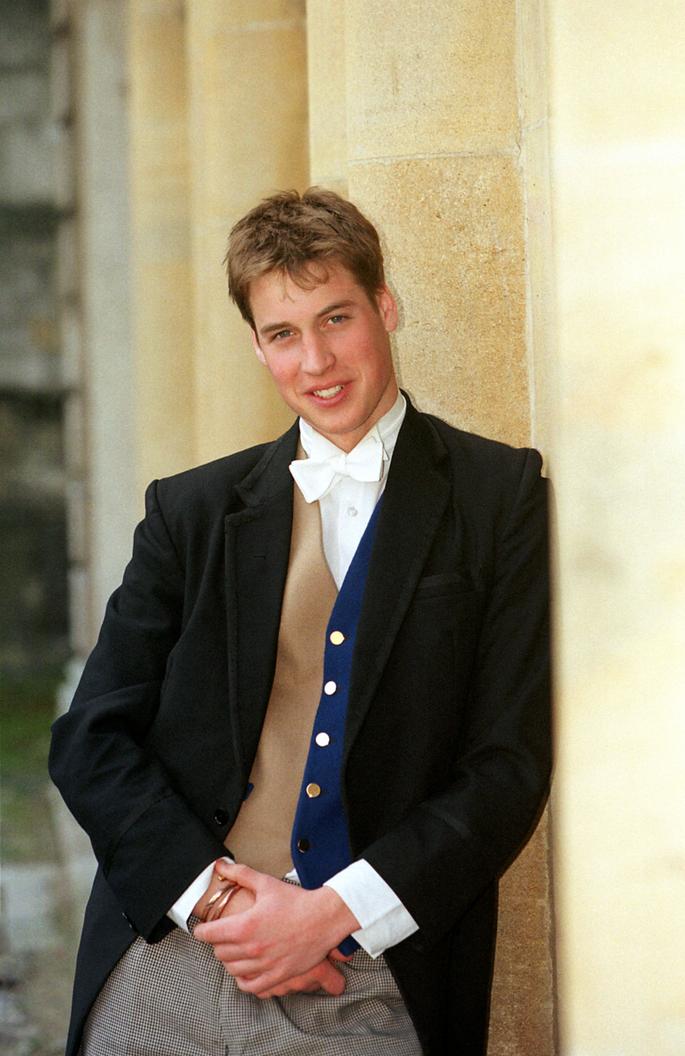
Wallace’s story is straightforward and martyr-like. He embodies the idea of the brave underdog who stood up to an overwhelming power. This fits neatly into the cultural memory and collective imagination—a veritable folk hero. It’s easier to remember a rebel who fights for freedom right away than a king who had changing loyalties and family conflicts to resolve first.
Robert the Bruce’s narrative, with its twists and moral ambiguity, is harder to dramatize for mass audiences. His tale involves political intrigue, strategic betrayals, and a slow-building claim to independence. The messy reality of medieval politics doesn’t translate well into blockbuster movies or simple legends.
Also, think about the power of martyrdom in storytelling. Wallace’s brutal execution made him a symbol of sacrifice and resistance—ideal for inspiring stories and songs. Bruce’s victory came through grinding perseverance, not a single glorious stand.
What Can We Learn from This Contrast?
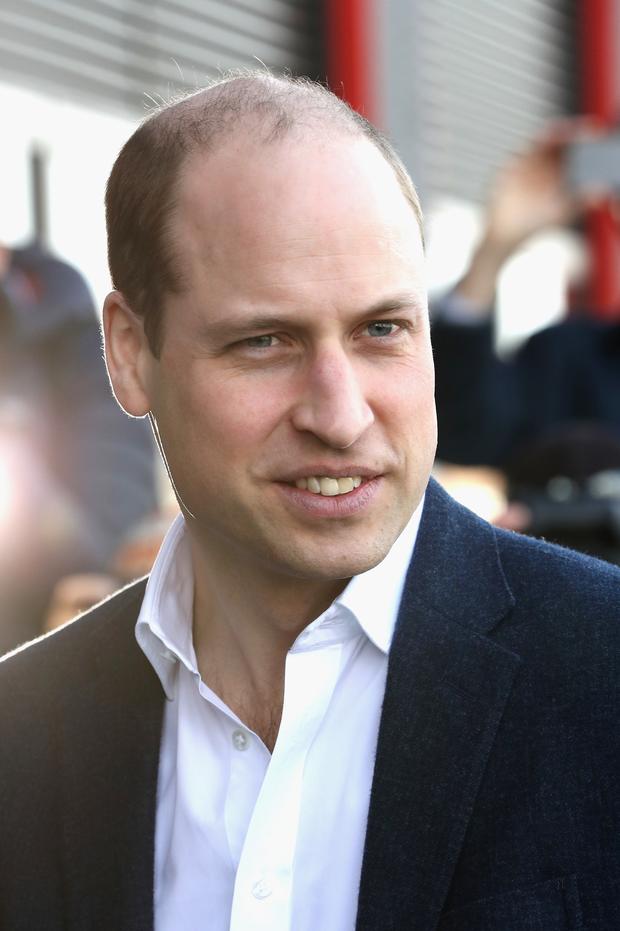
- History is rarely simple: The path to freedom often involves complex politics, shifting alliances, and pragmatism—even in medieval Scotland.
- Popular culture shapes “heroes”: The easiest and most emotionally compelling stories get the spotlight, not necessarily the most historically crucial figures.
- Real heroes come in many forms: Martyrs inspire with their sacrifice, but wise leaders like Robert secure lasting change.
So, next time you hear “William Wallace” shouted in dramatic fashion, remember: behind the glory stands Robert the Bruce, the man who actually won Scottish independence through patience, cunning, and politics.
Final Thoughts: Recognizing Both Legends
Wallace reminds us of the courage to fight, even when the odds are against us. Robert the Bruce teaches the value of long-term vision and strategy. Both are crucial in Scotland’s story. Understanding their full roles enriches our appreciation of history and reminds us that freedom rarely comes from a single battle or man.
Isn’t it time Robert the Bruce got a little more stage time alongside William Wallace? They both deserve credit, but one’s story is simpler and war cries louder—while the other’s mightier in the end.
